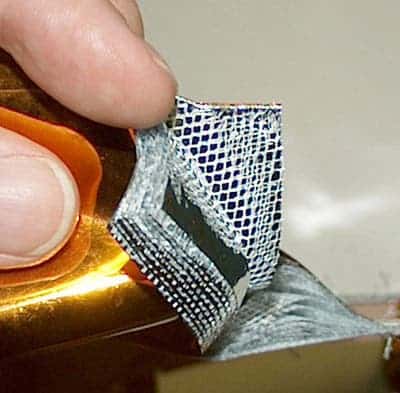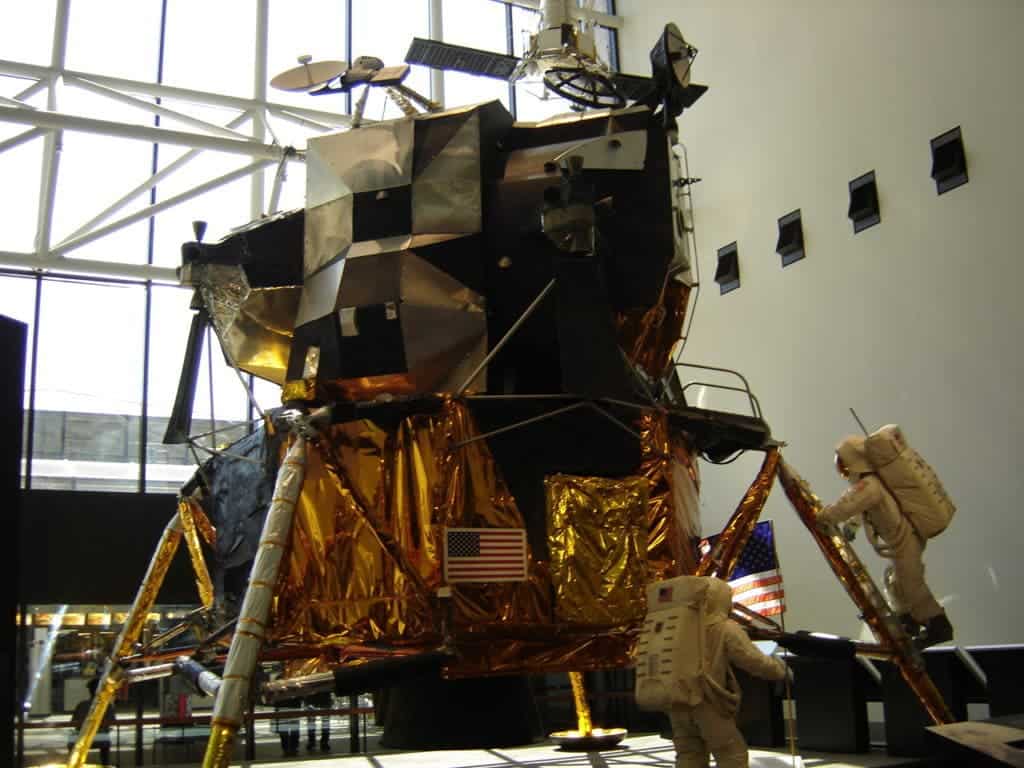If you’ve ever seen a satellite, odds are it had a golden or silver foil around it. So what’s that about?
The short story
Well, despite the common knowledge of space being “cold,” it’s actually really difficult to get rid of any heat in a vacuum. This is where the foil comes in — it’s all about the insulation. They reflect radiation while keeping some of the heat trapped in.

Space blankets
It’s called Multi Layer Insulation (MLI for short), and it does just what it says — it’s a multi-layer system designed to insulate the satellite or spacecraft. These layers are usually made of polyimide or polyester films (types of plastics), coated with very thin layers of aluminum. The exact composition of the MLI depends from case to case, but that’s pretty much the gist of it. It’s not a foil, it’s rather a series of layers. You can think of it as a space blanket.
Now, a sensible question would be… insulate it from what? What do satellites need to be insulated from? Well, while the temperature in space is a measly 2.73 Kelvin (-270.42 Celsius, -454.75 Fahrenheit), just a smidge above the absolute lowest possible temperature, satellites can get pretty hot. The Sun shines directly on them, with no atmosphere to filter out some of the energy, and this can raise temperatures high enough to boil water.

Without a highly reflective surface, probes and satellites would just absorb the sun’s energy and heat up to the point of failure, with no possibility of cooling down (because space is a vacuum, and heat can’t travel through vacuums). This is why the MLI is a key feature of spacecraft design — it enables them to remain at a reasonable (functioning) temperature. Since many satellites have complex electronic circuitry on them, they can be highly vulnerable to heat and temperature variation. But it does even more than this.

The insulating system ensures that the satellite doesn’t overheat, but it’s also what allows it to maintain a sufficient degree of heat. After all, simply radiating all the heat away would leave the spacecraft freezing cold. The system can absorb some of the radiation hitting the satellite, keeping it at a cozy temperature. It’s also resistant to both cold temperatures and ultraviolet radiation, making it suitable for outer space.
MLI is also used as a first line of defense against impact with space dust. Even tiny particles can do great damage, and having several protective layers works as a good buffer.
Saving satellites in space, saving lives on Earth
MLI is basically a thermal blanket (a space blanket, if you wish), and like many other pieces of technology, it also made its way into our day to day lives. Nowadays, space blankets are included in many emergency, first aid, and survival kits. Since they were designed to last in the ungodly conditions of outer space, they can easily withstand wind and rain down on Earth. Couple that with their low weight, and it’s easy to understand why they’ve become so useful for outdoor enthusiasts and emergency workers. These blankets are often given to marathoners or people suffering from hypothermia, and even the US military routinely uses them in some situations. Instead of calling them space blankets, we just call them survival blankets now.

Like many other technologies, MLI started as a space technology and ended up having a broader impact here on Earth. It’s hard to say just how many lives insulation systems based on it have saved, but the fact that rescue workers use them all across the world is very telling.
They can be used to protect someone from extreme cold as well as extreme heat sources. Similarly to space blankets, they often have a golden and a silver side, but unlike the space blankets, they are more often used to trap heat inside rather than reflect radiation. As rescue teams put it, if you’re saving someone from extreme cold or hypothermia, ‘gold goes to cold’.


